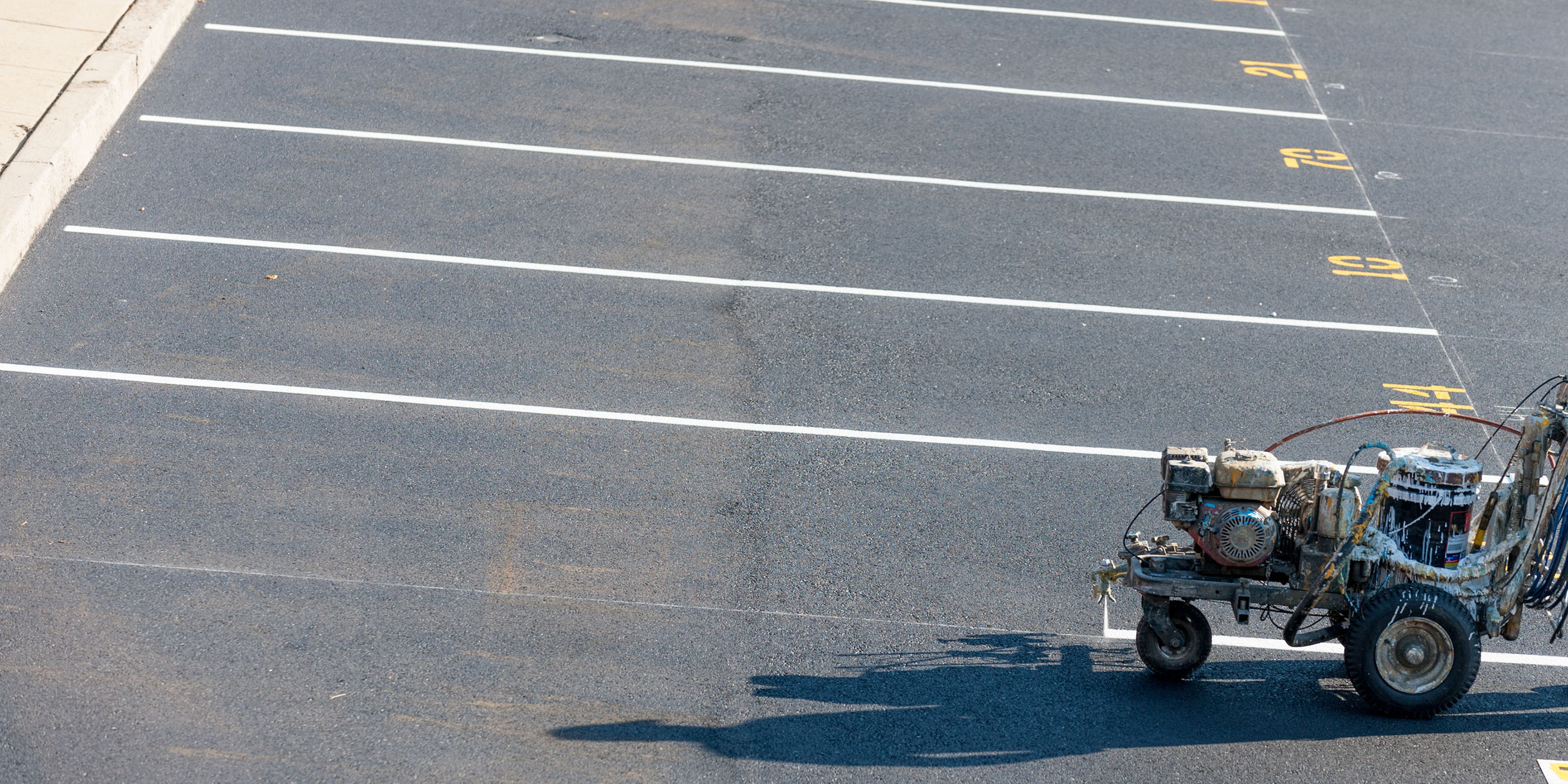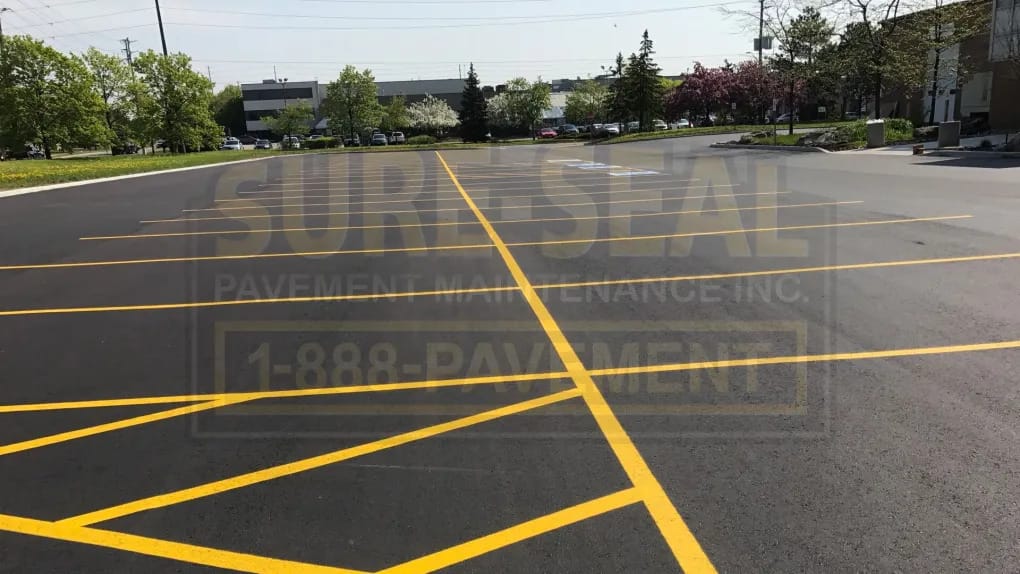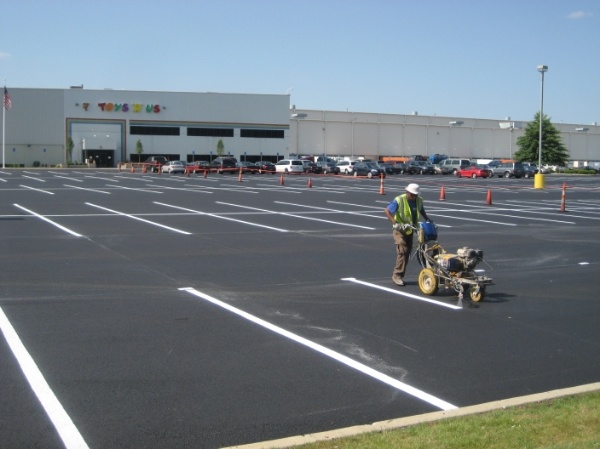A Comprehensive Overview to the most effective Practices in Road Paint for Public Highways
Efficient road painting is a critical element in making certain public security and optimum traffic flow on freeways. This discussion will certainly discover the most effective techniques in this area, including the option of suitable materials and progressed application techniques. It is necessary to take into consideration not only the instant impact of roadway markings yet also their long-lasting upkeep and visibility under varying ecological problems. Understanding these elements can dramatically influence the effectiveness of road markings, yet lots of are not aware of the nuances involved. As we think about these finest techniques, the effects for accident reduction and overall road functionality will end up being noticeable.
Value of Road Painting
Road paint plays an essential role in maintaining website traffic safety and security and performance, with researches showing that well-marked roads can minimize mishaps by up to 30%. The clear distinction of lanes, pedestrian crossings, and various other crucial markings offers to direct chauffeurs and pedestrians, fostering a foreseeable atmosphere when traveling. This predictability is important for effective navigating and assists reduce confusion, which can usually bring about mishaps.
Additionally, roadway markings are critical in communicating important details, such as speed limits and directional guidance. They boost visibility, especially in adverse weather or throughout nighttime driving. The existence of reflective products in road paints further boosts visibility, permitting motorists to discern essential markings that influence their actions on the road.

Picking the Right Materials
Picking proper materials for roadway painting is necessary to attaining long lasting and effective markings. The choice of products directly affects the presence, durability, and safety of road markings. Common choices include water-based paints, solvent-based paints, and polycarbonate products, each with distinct residential or commercial properties and applications.
Water-based paints are eco friendly, quick-drying, and ideal for most weather, making them suitable for metropolitan settings. They might require more regular upkeep due to wear and tear. Solvent-based paints, while supplying exceptional attachment and sturdiness, can posture ecological and health worries as a result of unpredictable organic compounds (VOCs)
Thermoplastic materials are significantly preferred due to their resilience and lasting performance. These materials are heated up prior to application, enabling a solid bond with the pavement. Their reflective residential properties boost presence, especially during the night.
When selecting materials, elements such as web traffic quantity, environment problems, and the certain sort of roadway should be thought about. Conducting complete research study and consulting with makers can assist make certain that the picked products meet local regulations and standards, ultimately adding to more secure highways and enhanced chauffeur awareness.
Effective Application Techniques
Efficient application techniques play an essential duty in guaranteeing that roadway markings attain ideal performance and durability. This technique lessens overspray and guarantees that the paint is used consistently, which is essential for preserving road security.
Prior to application, it is important to prepare the surface area effectively. This includes cleaning up the roadway of dampness, debris, this link and oil to enhance bond. Additionally, temperature and moisture should be thought about throughout the application process to accomplish the very best results.
Utilizing the ideal equipment is likewise critical. Line stripers furnished with flexible widths enable for specific markings that adapt regulative requirements. In addition, it is necessary to adjust the equipment on a regular basis to make certain consistency in paint thickness.
Timing and Ecological Aspects
Appropriate timing and consideration of environmental elements are important for the successful application of road markings. The performance of roadway paint mainly depends upon humidity, temperature, and wind conditions at the time of application. Preferably, temperature levels need to be in between 50 ° F and 85 ° F(10 ° C to 29 ° C) for optimum bond and treating. When temperatures are also low, paint may not cure correctly, causing early wear and lowered visibility.
Moisture levels additionally play a crucial duty; high humidity can prevent drying times, while exceedingly dry problems may trigger rapid evaporation of solvents, influencing the paint's performance. Wind can introduce contaminants and particles, potentially jeopardizing the quality of the markings. It is advisable to select tranquil days for application.

Setting up painting jobs during positive weather problems can dramatically enhance the longevity and performance of road markings - Pavement marking. By carefully examining these aspects, agencies can make sure that roadway markings are applied successfully and maintain their exposure and longevity over time.
Maintenance and Durability Approaches

One effective method is to implement an organized click here for info repainting program based on web traffic volume and environmental factors - Parking lot line striping. Higher traffic areas may need even more regular maintenance to counteract the abrasive effects of vehicles and weather problems. In addition, making use of sturdy products, such as polycarbonate and epoxy paints, can considerably extend the lifespan of road markings
Cleaning roadway surfaces to remove particles and impurities is one more essential element of upkeep. This makes sure optimum attachment of new paint and improves the total effectiveness of the markings. Additionally, using advanced technologies, such as computerized monitoring systems, can simplify the surveillance procedure and optimize maintenance schedules.
Incorporating these approaches will not just boost the presence and security of road markings yet additionally reduce lasting prices related to regular repainting and fixings. (Parking lot line painting)
Conclusion
View Line painting Abbotsford in a full screen map
The option of suitable products, integrated with reliable application methods and consideration their website of ecological aspects, adds to the longevity and visibility of road markings. Regular maintenance and assessments further expand the life-span of these markings, eventually decreasing mishaps and boosting total road use.
The existence of reflective materials in roadway paints additionally improves presence, allowing motorists to determine vital markings that affect their behavior on the road.
Choosing ideal materials for road painting is vital to attaining resilient and effective markings.While the initial application of road markings is important, recurring upkeep approaches are similarly important to guarantee their durability and exposure. Additionally, the usage of sturdy materials, such as thermoplastic and epoxy paints, can substantially prolong the life expectancy of roadway markings.
The choice of appropriate materials, combined with effective application methods and consideration of environmental factors, adds to the sturdiness and visibility of road markings.